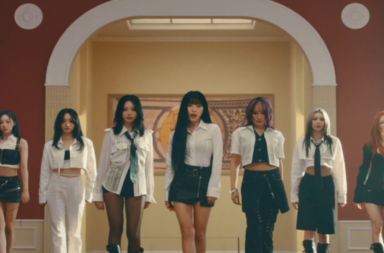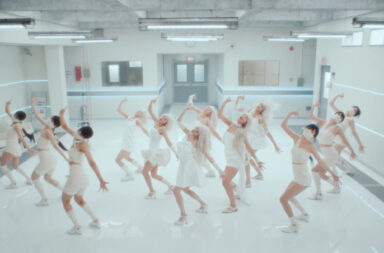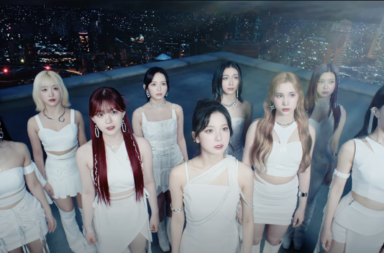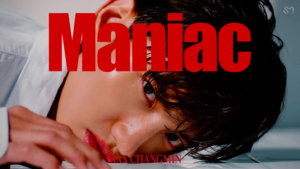
Promotional, pre-release K-pop MVs haven’t always made the biggest splash — that is, until SM Entertainment dropped the MV for TVXQ’s Changmin’s song “Maniac,” prior to the release of his second mini album, Devil.
Known for his dynamic, theatrical musical style per his first solo EP, Chocolate, Changmin (also known as MAX CHANGMIN) takes his theatrical tendencies to a new, cinematic level in the MV for “Maniac,” which largely pays homage to several classic and cult-favorite films.
Fittingly, the track itself qualifies as somewhat of a tribute to “classics” of all sorts. Musically, “Maniac” falls somewhere between an upbeat ‘70s rock song (a la the band Queen), a sitcom theme song, and the opening number of an extravagantly-produced musical. Changmin’s powerful vocal tenor, a mighty backing choir, and a fast-paced, frantic beat and piano instrumental add to the track’s drama, firmly laying the groundwork for a punchy, immersive musical experience when paired with the MV.
To follow suit, “Maniac” appropriately begins with a direct reference to iconic cinematography from Alfred Hitchock’s 1960 film Psycho — we first see a close-up shot of a running showerhead, Changmin’s hand slipping down the wall, the shower curtain falling off the rod hook-by-hook, the drain swirling, then a shot beginning from his eye that slowly zooms out to reveal him lying on the bathtub floor. To mark the MV’s cinematic flare, the word “Maniac” is plastered over Changmin’s face in bold, red typeface, along with his name in large red font at the bottom of the screen.
Director Lee Rae-kyung, who’s also known for making music videos for artists like IU, confirmed several of the films used as inspiration in the MV via her Instagram account (fittingly, her username is @itchcock). Such films include several Hitchcock movies, including the aforementioned Psycho, as well as The Birds, Vertigo, and North by Northwest, plus cult classics The King of Comedy, The Big Lebowski, The Shining, Brazil, and The Cabinet of Dr. Caligari.
Some scenes are taken directly from these films and practically copy-and-pasted right back into the MV but with Changmin in the starring role, such as the Psycho shower scene and the TIME-mirror scene from The Big Lebowski. Others are integrated into the MV more conceptually or via visual references that clearly indicate that the scene is an homage to a particular film, but still have the same profound effect as those that are included as direct replicas.

Regardless of how exactly these tributes are incorporated into the MV, director Lee weaves them in seamlessly enough so that “Maniac” feels like one continuous, standalone mini film of its own rather than several references merely strung together. “Act 1: Black Widow,” as it’s titled in the MV, particularly takes stark inspiration from Martin Scorsese’s film The King of Comedy via several visual elements, including the velvety red, black, and white talk show set and Changmin’s ‘80s-era orange suit and blue ruffled shirt getup. Changmin’s acting also takes center-stage here, literally, as he aptly takes on the role of the film’s main character, Rupert Pupkin, a delusional aspiring stand-up comedian, while singing the track’s lyrics.
Between Act I and “Act 2: Who drives him crazy?,” the MV makes visual references to both Vertigo and The Shining, transitioning seamlessly into the next phase of the story while referring to a new set of films. Act 2 especially alludes to several prominent elements from The Shining, including boldly centered shots, the same pentagonal-patterned red carpet featured throughout the film, shots of Changmin as viewed through a door peephole, and an obvious reference to the film’s pivotal typewriter scene that launches its main character further into madness. Here, Changmin obviously takes on a role similar to said character, Jack Torrance, portraying himself as descending into an equivalently crazed state as he frantically types “help me” over and over again on his typewriter.
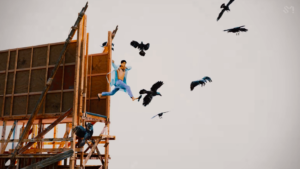
Acts 3 and 4 make striking visual references to The Cabinet of Dr. Caligari and Brazil, with Act 4 taking on the guise of a true end credits scene that would play in a theater, further adding to the MV’s remarkably cinematic ambience. The end credits in particular lead “Maniac” out on a high note, and arguably feature the MV’s most visually-pleasing shots.
Several picturesque elements are combined together all at once, as multiple overlaid images of Changmin’s silhouette appear atop a bright red background, which then transition into full-color images atop a white background, and are then overlaid by more moving images of Changmin and the rolling credits until a smooth transition takes us right back to the beginning — Changmin lying on the floor of the bathtub just as in the first Psycho-inspired scene.
While the MV’s visual replications of classic films are so extraordinary they’re practically hypnotic, they wouldn’t be nearly as compelling without Changmin’s own visuals and facial expressions. During each of the main acts, Changmin embodies the main character of the referenced film using facial expressions that are almost more outspoken and vocal than his own robust singing vocals.
In Act 1 in particular, the camera makes a point to focus directly on Changmin’s reaction to the production crew members clad in hilarious yet terrifying retro makeup and the mishaps happening around him on stage. Throughout, he maintains a witty yet crazed look on his face, epitomizing the exact concept that “Maniac” and the films its includes express.

Although “Maniac” is almost entirely comprised of innuendos to other films, and horror or dark comedy films at that, these films’ exaggerated, cheeky, and iconic cinematography and aesthetics lend almost flawlessly to the MV’s and track’s own darkly comedic and over-the-top atmosphere. With “Maniac,” Changmin duly joins forces with the cinematic classics to become a star of his own.
(YouTube. Korea Times. Instagram. Images via SM Entertainment.)
